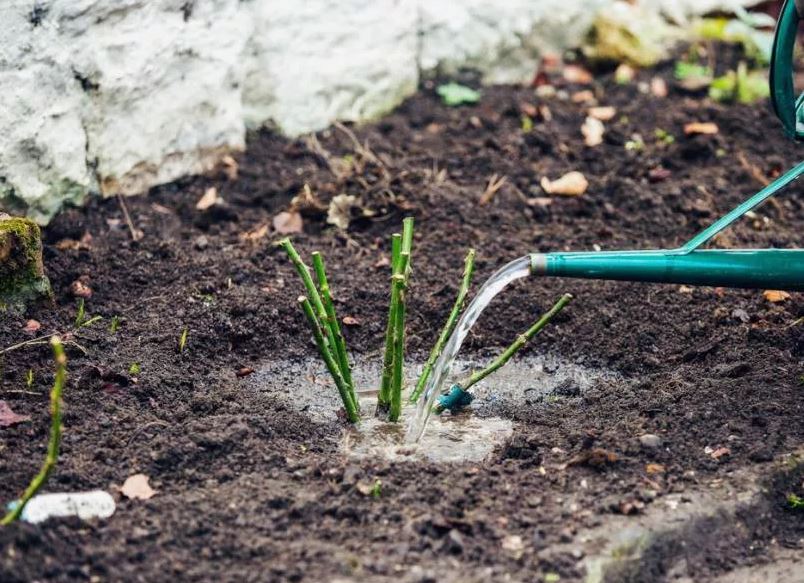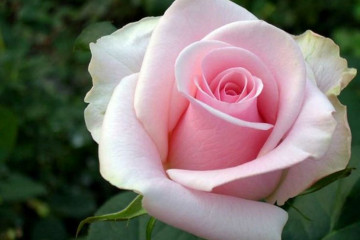Rose Queen of Hearts (Queen of Hearts)
Content:
Queen of the Heart - this is how the name of the Queen of Hearts rose variety is translated. This plant has really won the hearts of many rose growers with long flowering, bright flowers with numerous petals. The culture is suitable for beginners due to the fact that caring for it is quite simple.
History
The Rose Queen of Hearts represents the Floribunda group. The plant added to the class 11 years ago, in 2008. This year is considered the year of birth of the variety. It was bred by German breeders specifically for gardeners who do not have the opportunity to devote all their free time to the site. The plant was created in the official Kordes nursery.
Description of the variety
The queen of the heart is a tall bush. Its height is 90-105 cm. Width is 50-80 cm. The stems are powerful with numerous thorns. Leaves are emerald, medium glossy, medium size.
Each stem can have 2-3 flowers. There are also single buds. Each flower is like a work of art. The diameter of the saucer-shaped flower is 9-11 cm. Splendor is created due to the abundance of petals. There can be about a hundred of them in one flower. The color of the petals is warm pink, with a rich coral undertone. There is a velvety bloom.
Among the characteristic features are:
- Frost resistance. The bush can withstand winters down to -20 degrees.
- The aroma is floral, weak.
- Velvet flowers endure rain and showers without losing their freshness.
- If there is a lot of sun on the site, then the petals may fade slightly, burn out.
Rose Queen of Hearts, like other representatives of Floribunda, blooms profusely and brightly. The period of activity starts in the spring. By the beginning of summer, buds are formed. They bloom in June. Long-term flowering, repeated. It ends at the very beginning of autumn. After flowering, the roses gradually enter a dormant period. It occurs during the cold season.
Advantages, disadvantages
A person who decides to purchase a variety should be aware of its advantages and disadvantages. The plant has more positive aspects than negative ones.
Dignity:
- does not require special care;
- has strong immunity;
- high decorative characteristics;
- suitable for growing as a single plant and as part of mixborders;
- profuse flowering with the possibility of re-bud formation.
disadvantages:
- not quite suitable as cut roses;
- the predominance of thorns;
- petals can fade under the sun.
Variety in landscape solutions
Rose Hearts looks dignified as single bushes in front of the veranda of the house. Landing as part of pink collections is allowed. The variety can become an effective element of rockeries, mixborders, flower beds with different plants.
Planting rose hearts
Before you start dealing with the queen of hearts variety, you should know the details of its cultivation, planting. Some of the main points to look out for are:
- in what form does the landing take place;
- the right time of the year;
- selection of beds;
- soil preparation;
- step-by-step landing technology.
In what form does the landing take place
In order for the rose bush to take root on the site, you should give preference to healthy seedlings. The age of such planting material must be at least two years. It is best to take a young bush in a pot, that is, with a closed rhizome. The height of the seedling is at least 20 cm.
Time
Queen of hearts rose is planted in open ground in late spring. Do not expose the seedling to temperature extremes.
Selection of beds
Roses are plants that don't like moving. Therefore, the place for the bush should be chosen carefully. It should be located away from the accumulation of groundwater. The bed is chosen in a slightly shaded place. The plant will not endure sunbathing throughout the day, except for the burnout of the petals, the bush may begin to wither.
Soil preparation
Rose Queen of Hearts undemanding to the ground. The main thing is that it is nutritious and not heavy clay. The acidity is neutral. Otherwise, river sand, peat, manure, compost, and a little lime are added to the soil pit.
Step-by-step landing technology
Adhering to the recommendations, you can take the right step towards a decent flowering of the bush:
- The hole is being prepared. In terms of volume, it should be 10-15 cm larger than the rhizome.
- The soil, which was removed from the pit, is mixed with manure, ash, a handful of nutrient mixture for garden flowers are added.
- The seedling is placed in the hole in such a way that the graft or root collar is only 2-3 cm deep.
- The hole is filled with earth, compacted.
- A shallow trunk circle is made around the young bush. It fills with water.
- Planting is mulched with compost.
Care procedures
Rose care includes the following procedures:
- watering;
- fertilization;
- sanitary pruning, transplanting;
- preparation for wintering.
Watering
Rose bushes love water, but do not tolerate stagnation. Watering should be done once every 10 days. Do this in the evening and only at the root.
Top dressing
Fertilizers are applied as complex mineral and organic fertilizers. They alternate. It is allowed to feed the shrub 3-5 times from May to September at regular intervals.
Sanitary pruning, transplant
Pruning is carried out twice a year. In the spring, elongated branches are shortened, damaged shoots are removed. In the fall, they get rid of leaves, faded buds.
Preparing for winter
Rose hearts grow well in regions with cool climates. For example, in the Urals, central Russia, Moscow region. Its winter hardiness, declared by breeders in the description, is about -20 degrees. Therefore, the gardener should prepare for the winter. First, the bush is dug in, a peat pillow is made and covered with spunbond.
During flowering
During the flowering period, the main care is proper watering. Fading buds are cut off. This stimulates the plant to bloom again. At the beginning of summer, nitrogen is introduced, in August - superphosphate. Like other varieties, the queen of hearts rose responds to the irrigation of the bush from a spray bottle. For this, warm water is taken. The procedure is performed in the evening.
Flowering problems
The variety may refuse to bloom for the following reasons:
- unsuitable place (wetland, bright sun all day, etc.);
- aggressive neighbors (combination with lilacs, spirea bush, which take all nutrients from the soil);
- too much pruning.
Diseases, insects, the fight against them
Rose Queen of Hearts has a strong immune system. She is almost never overcome by diseases, but insects can bite. Among the common ones:
- thrips;
- red ticks;
- aphid;
- leaf rollers, etc.
In order to protect the queen of the garden, it is recommended to plant fragrant marigolds nearby. They repel insects. If a pest attack has already occurred, it can be repelled by means:
- Fitosporin;
- Gamair;
- Alirin-B;
- Spark gold, etc.
Reproduction
The variety is best propagated by cuttings. However, a beginner gardener should know how to do it right.
Best time
The most optimal time for harvesting cuttings and their rooting is the second or third decades of June. Cuttings are harvested from mature bushes. For this, both green branches and woody ones are used.
Step by step process
First, cuttings are harvested. The thickness should be like that of a simple pencil, the length should be 10-15 cm. The lower part is cut off at an angle. After the cuttings are ready, the following steps are followed:
- Cuttings are treated with a growth stimulant.
- A garden bed is being prepared. It should have fertile, loose soil.
- Cuttings are inserted into the ground at an inclination of 70 degrees.
- The bed is covered with foil.
- The film is removed daily, the children are ventilated, sprayed with water.
- Rooting will occur in 20-30 days.
The beautiful rose bush Queen of the Heart will decorate any courtyard. Thanks to its strong immunity, the plant will not cause trouble for the gardener due to diseases. Caring for the variety is simple: the main thing is to shed, cut and fertilize the crop in time. She is sheltered for the winter.





















